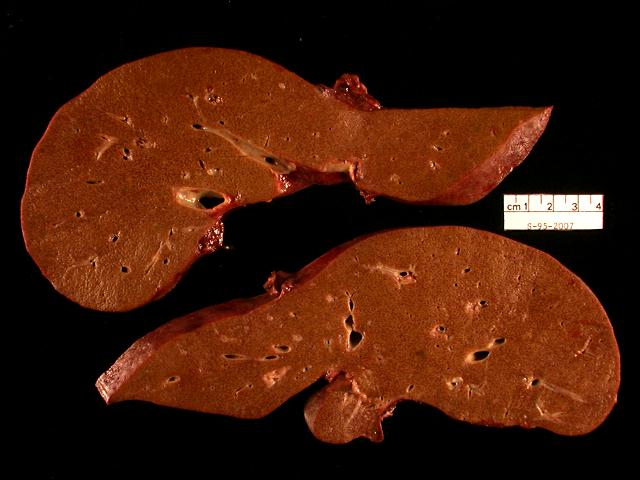The Wilson Disease Gene
Published on September 16 2014
The Wilson disease gene was localized to human chromosome 13 by cosegregation of the disease with the red cell enzyme marker, esterase D, in several large Middle Eastern kindred. Further linkage analysis of additional families, using more polymorphic DNA markers defined a region close to the retinoblastoma locus as the candidate region for the Wilson disease gene. By positional cloning strategies, the Wilson disease gene was identified by three independent groups in 1993.
Final identification was established with the use of conserved regions of the previously discovered Menkes disease (another disease with impaired copper metabolism) gene. The Wilson disease gene codes for a copper transporting P-type adenosine triphosphatase (ATPase), ATP7B.
Wilson disease protein contains the following functional domains and is thought to form an ion channel: six copper binding regions [Cu] containing Cys-X-X-Cys motifs at the amino terminal end; and adenosine triphosphate (ATP) binding, aspartyl kinase and phosphorylation domains. Alternatively spliced forms of Wilson disease protein lacking transmembrane sequences 3 and 4 (exon 8) are expressed in brain.
The functionally important regions of the Wilson disease gene are six copper binding domains, a transduction domain (amino acid residues 837-864; containing a Thr-Gly-Glu motif) involved in the transduction of the energy of ATP hydrolysis to cation transport, a cation channel and phosphorylation domain (amino acid residues 971-1035; containing the highly conserved Asp-Lys-Thr-Gly-Thr motif), an ATP-binding domain (amino acid residues 1240-1291) and eight hydrophobic transmembrane sequences (1-8), in one of which (region 6) is the Cys-pro-Cys sequence found in all P-type ATPases.

Molecular genetic analysis of affected patients reveals over 200 distinct mutations (database maintained at the University of Alberta -http://www.medgen.med.ualberta.ca). Mutations include missense and nonsense mutations, deletions and insertions.
Some mutations are associated with a severe impairment of copper transport resulting in severe liver disease very early in life; other mutations appear to be less severe with disease appearance in mid adulthood. While most reported mutations occur in single families, a few are more common. The His1069Gln (H1069Q) missense mutation occurs in 30-60% of patients of eastern-, northern-and central-European origin.
It is less frequent in patients of Mediterranean descent and only rarely seen in patients of non-European origin. About 10% of patients of French or British extraction have a Gly1266Lys mutation in the ATP hinge domain. The 2299insC mutation can be detected in some patients of European and Japanese descent.
The Arg778Leu mutation is present in 27% of Taiwanese patients, but is not found in non-Asian patients. In Sardinia two frameshift mutations (1515insT and 2464delC) are found in about 20% of patients. These mutations were not found in other populations.
The study of genotype-phenotype correlations is hampered by the lack of clinical data, the rarity of some mutations and the high frequency of the presence of two different mutations in individual patients (compound heterozygotes). In an ongoing study involving 820 patients with Wilson disease mostly from Europe, mutations on both chromosomes were identified in 58% of the patients , with at least one mutation in 30%. Sufficient information is available only for the H1069Q mutation.
Homozygosity for H1069Q is associated with late onset neurologic disease. In contrast, patients with mutations in exon 8 commonly present with liver disease.
/image%2F1207985%2F20140911%2Fob_a8710a_1.jpg)
/image%2F1207985%2F20140911%2Fob_a4ffc4_header-03.jpg)